Standing as one of antiquity’s most remarkable achievements, the Ishtar Gate continues to captivate minds and hearts across millennia. Built during King Nebuchadnezzar II’s reign around 575 BCE, this architectural marvel served as Babylon’s grand entrance and stands as a testament to the city’s power, culture, and religious devotion.
The Divine Gateway: Origins and Purpose
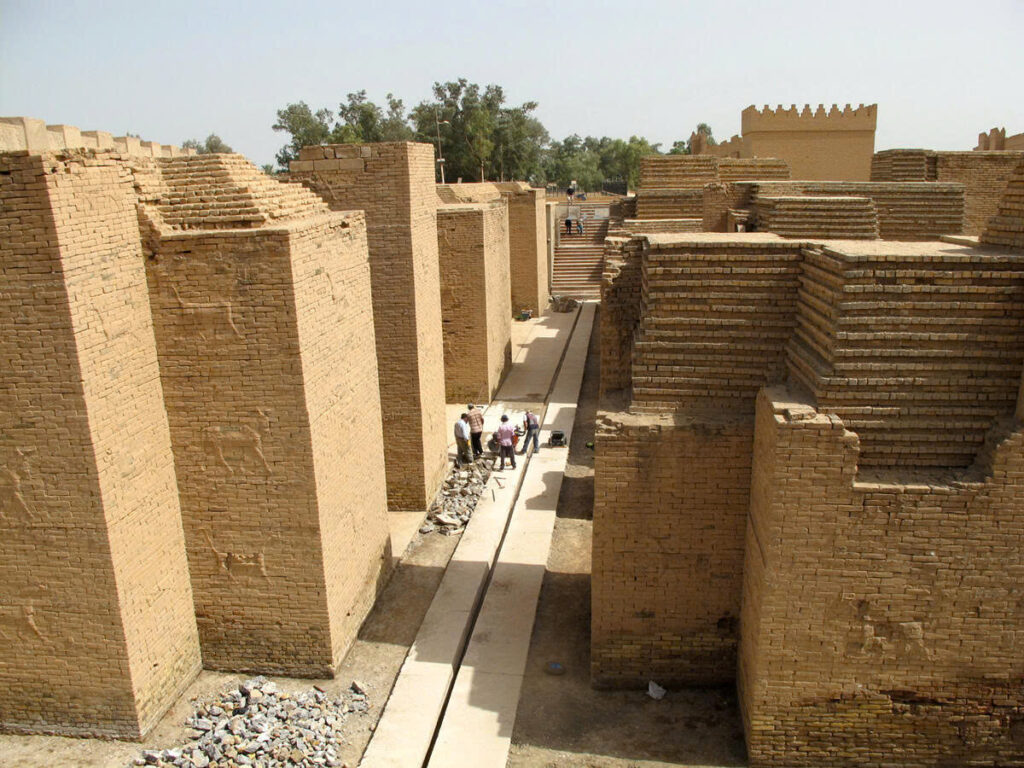
The gate’s dedication to Ishtar, the goddess of love, war, and fertility, reflected Babylon’s deep connection to its divine protectors. As both a defensive structure and ceremonial landmark, it played a crucial role in the city’s sacred festivals, particularly during the Akitu (New Year) celebrations, when divine statues processed through its magnificent archway.
Architectural Brilliance and Symbolic Design
A Canvas of Blue and Gold
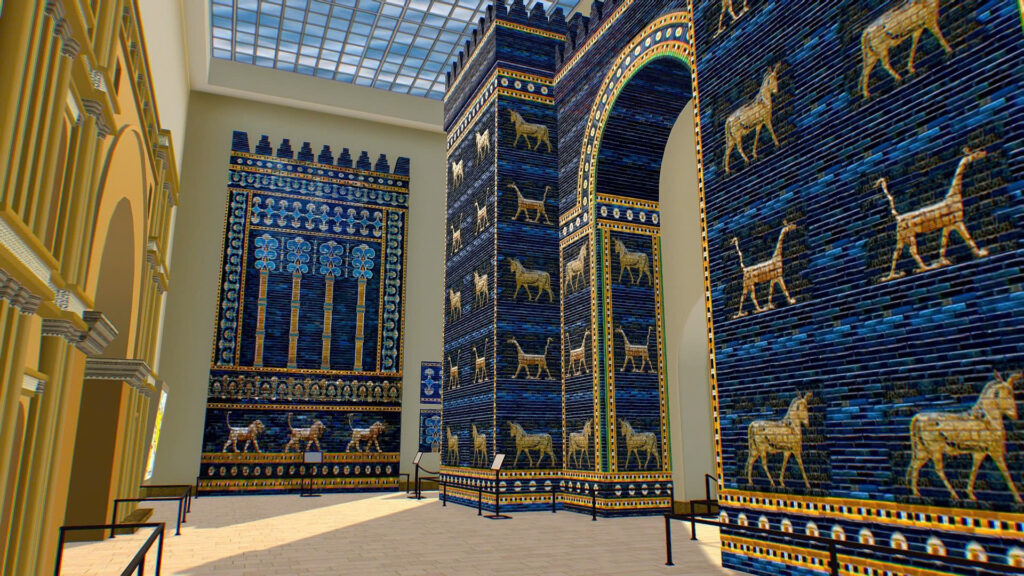
The gate’s most striking feature was its brilliant blue-glazed brick construction, creating a mesmerizing spectacle under the Mesopotamian sun. The walls showcased intricate reliefs of sacred animals, each carrying profound symbolic meaning:
- Majestic lions represented Ishtar’s protective strength over Babylon
- Mythical dragons symbolized Marduk, the city’s patron deity, embodying divine wisdom
- Powerful bulls, associated with the storm god Adad, represented strength and fertility
The Sacred Processional Way
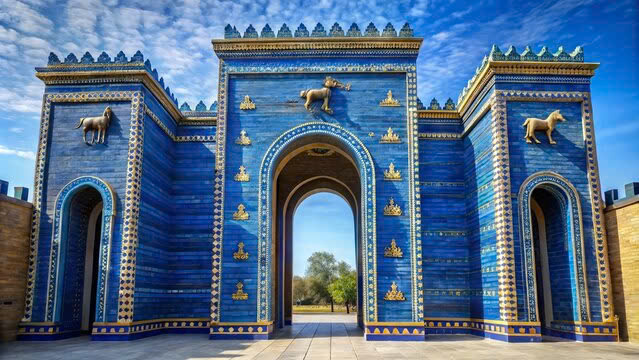
Beyond the gate stretched the Processional Way, a ceremonial avenue adorned with equally impressive glazed reliefs. This sacred path served as the stage for Babylon’s most important religious ceremonies, binding together the city’s architectural, religious, and political elements in perfect harmony.
Modern Discovery and Global Recognition

The early 20th century marked a turning point in the gate’s history when German archaeologist Robert Koldewey unearthed its remains. The subsequent reconstruction at Berlin’s Pergamon Museum has provided invaluable insights into Neo-Babylonian architecture. Meanwhile, the original site in Iraq maintains its prestigious UNESCO World Heritage status, ensuring its preservation for future generations.
Cultural Impact and Enduring Legacy
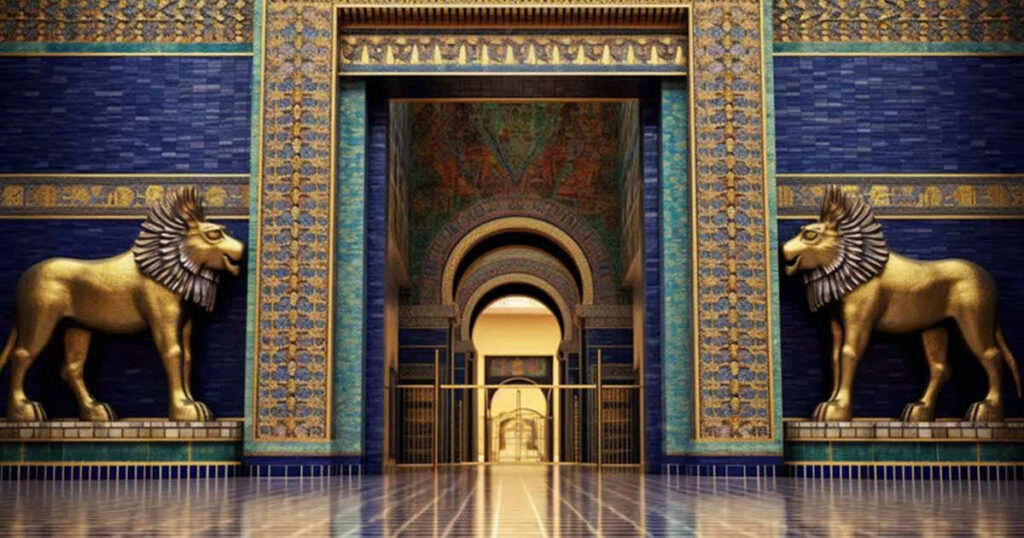
Today, the Ishtar Gate stands as one of humanity’s greatest architectural achievements. Its influence extends beyond its historical significance, inspiring continued admiration for Babylonian ingenuity and craftsmanship. The gate’s preservation and reconstruction efforts ensure that modern audiences can experience the magnificence of ancient Mesopotamian civilization firsthand.
A Bridge Across Time
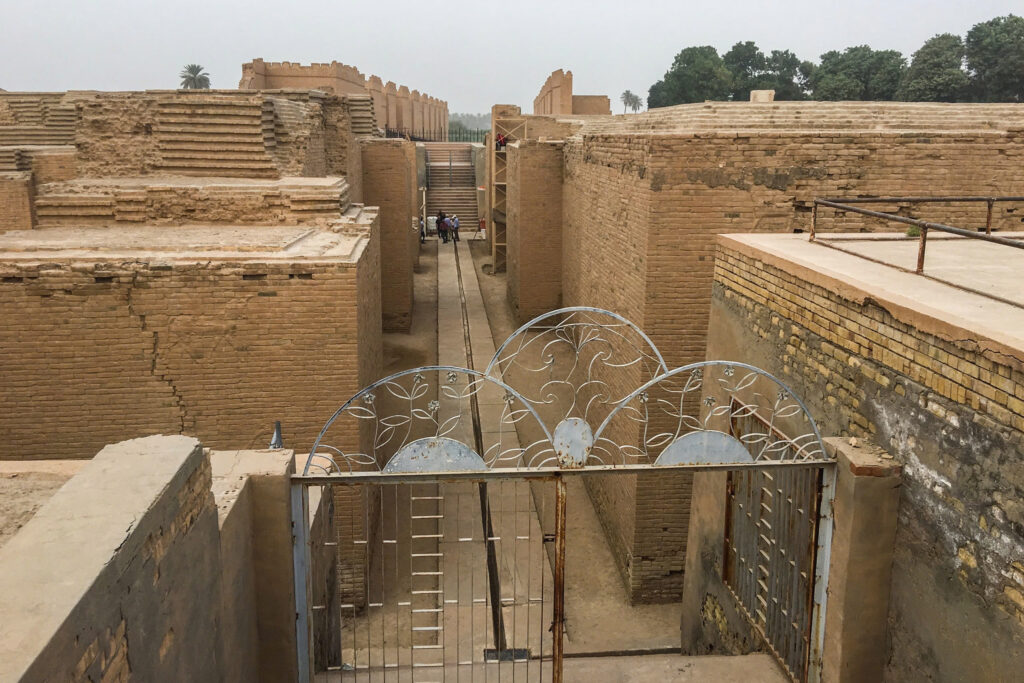
The Ishtar Gate represents more than architectural brilliance; it embodies the pinnacle of Babylonian cultural, religious, and political achievement. Its enduring presence, whether in its original location or through its reconstruction, serves as a bridge connecting us to the innovative spirit and profound spirituality of ancient Mesopotamia. This magnificent structure continues to stand as a testament to human creativity, ambition, and the timeless power of architectural expression.

